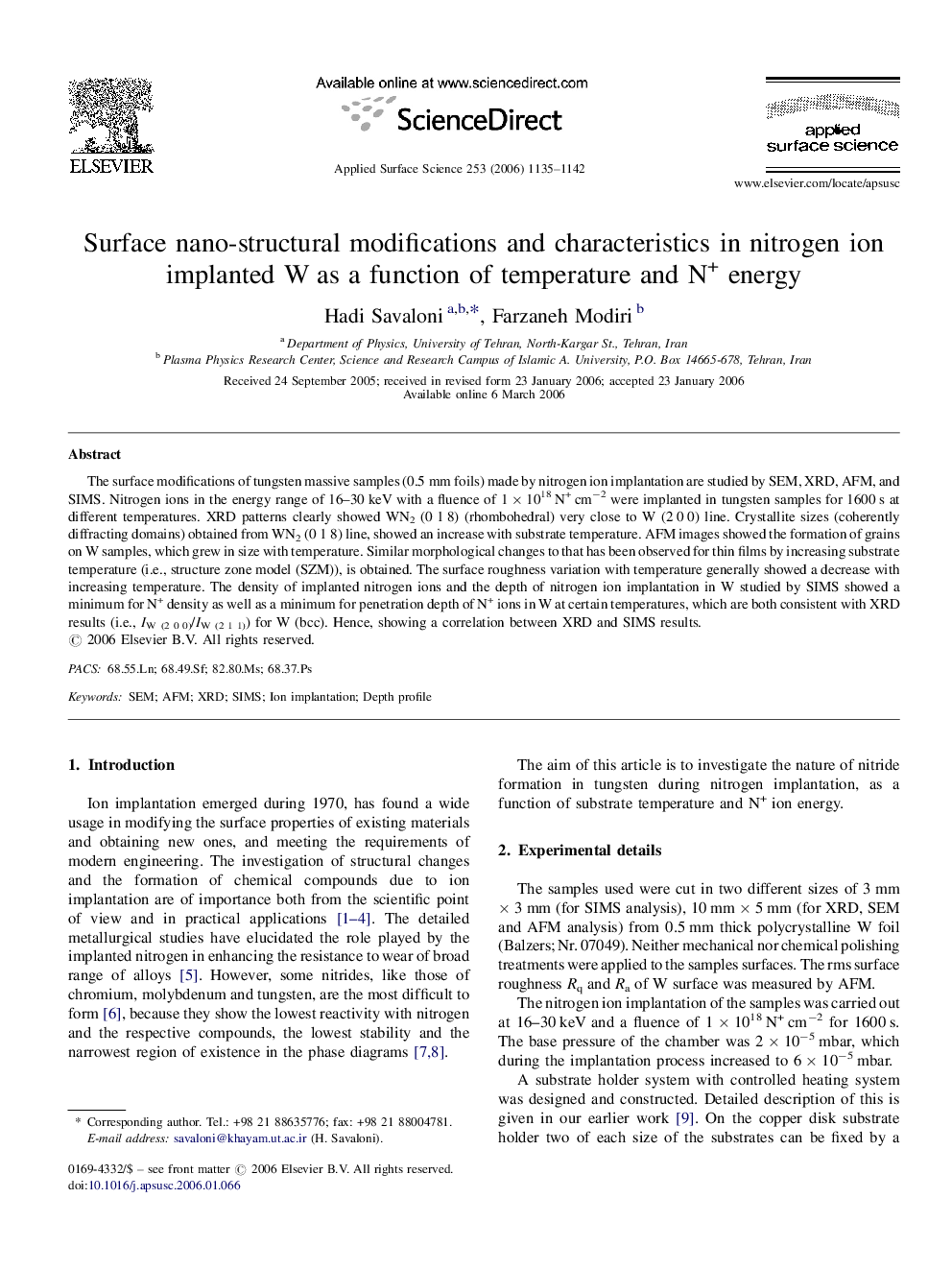| Article ID | Journal | Published Year | Pages | File Type |
|---|---|---|---|---|
| 5370121 | Applied Surface Science | 2006 | 8 Pages |
The surface modifications of tungsten massive samples (0.5Â mm foils) made by nitrogen ion implantation are studied by SEM, XRD, AFM, and SIMS. Nitrogen ions in the energy range of 16-30Â keV with a fluence of 1Â ÃÂ 1018Â N+Â cmâ2 were implanted in tungsten samples for 1600Â s at different temperatures. XRD patterns clearly showed WN2 (0Â 1Â 8) (rhombohedral) very close to W (2Â 0Â 0) line. Crystallite sizes (coherently diffracting domains) obtained from WN2 (0Â 1Â 8) line, showed an increase with substrate temperature. AFM images showed the formation of grains on W samples, which grew in size with temperature. Similar morphological changes to that has been observed for thin films by increasing substrate temperature (i.e., structure zone model (SZM)), is obtained. The surface roughness variation with temperature generally showed a decrease with increasing temperature. The density of implanted nitrogen ions and the depth of nitrogen ion implantation in W studied by SIMS showed a minimum for N+ density as well as a minimum for penetration depth of N+ ions in W at certain temperatures, which are both consistent with XRD results (i.e., IW (2Â 0Â 0)/IW (2Â 1Â 1)) for W (bcc). Hence, showing a correlation between XRD and SIMS results.
